Back once again with my latest collection of 1:300 offerings. This time as promised it's flying boats and floatplanes of the Axis.
I have a few of these in my collection already which you may already have seen.
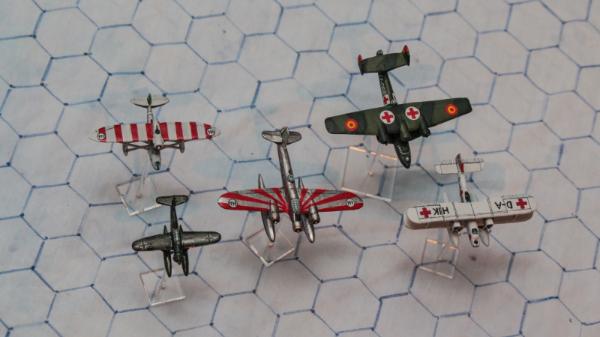
Here we have the German aircraft Arado 196, Dornier Do 24, Heinkel He 59 and the Italians, CANT Z506 Airone and CANT Z.501 Gabbiano. Details for all those will be back in previous posts.
So of course we're obviously short a good few Japanese ones there so unsurprisingly the vast majority of this new batch of Axis float planes and flying boats are of course Japanese.
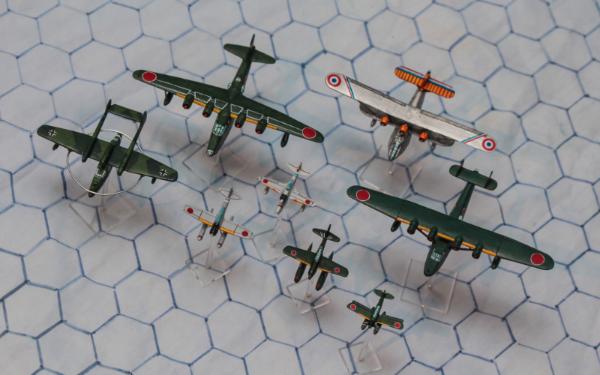
So let's get into these. The first of my Japanese seaplanes is the Kawanishi H6K Type 97 (allied codename"Mavis")
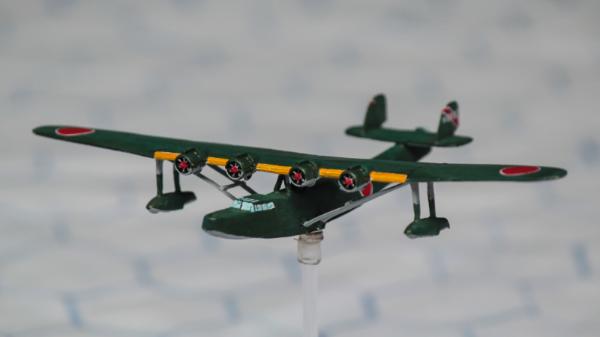
When I first saw a picture of this flying boat I just knew I had to have one and was delighted to find one in the always excellent Scotia Grendel Collectair range.
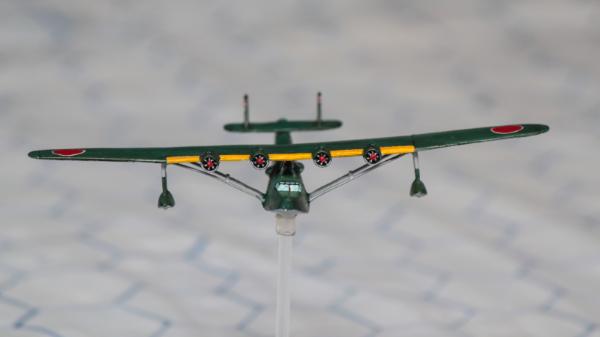
A great big high wing flying boat in a similar vein to the German Do 24, but scaled up to a four engine design for maximum Pacific patrol range. A crew of 9 could take this baby out on a 24hr patrol covering over 2500 nautical miles of range. They served all throughout the war as front line bombers, transports and reconnaissance patrol planes.
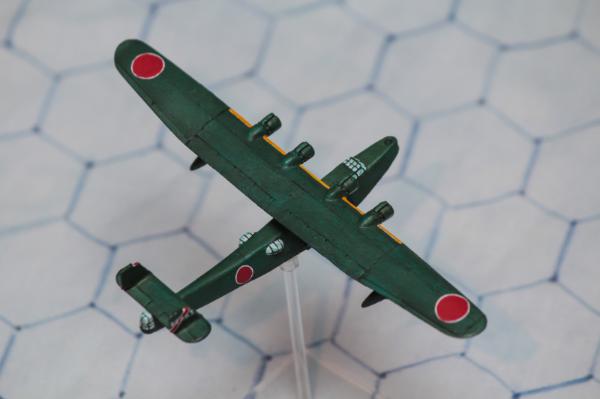
As allied fighters began to get the better of the old Mavis its front line duties were taken over by a newer and more modern design, the Kawanishi H8K known to the allies as "Emily"
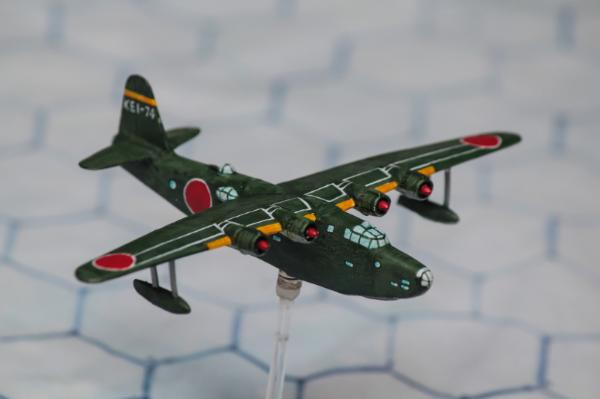
Emily was a big girl, another great four engined flying boat, this time more like the Short Sunderland, and as with the Sunderland enemy fighters had a healthy respect for its defensive capabilities. The Emily is often consider the very best of the big maritime patrol planes of the era.

On 4 March 1942, two Emily flying boats each carrying four 250Kg bombs conducted the longest ever two-plane bombing mission ever flown to date. Departing from the Marshal Islands they flew a round trip of over 7000km in an attempt to conduct reconnaissance over Pear Harbour and disrupt ongoing salvage and clean up operations following the infamous raid of Dec 7th.
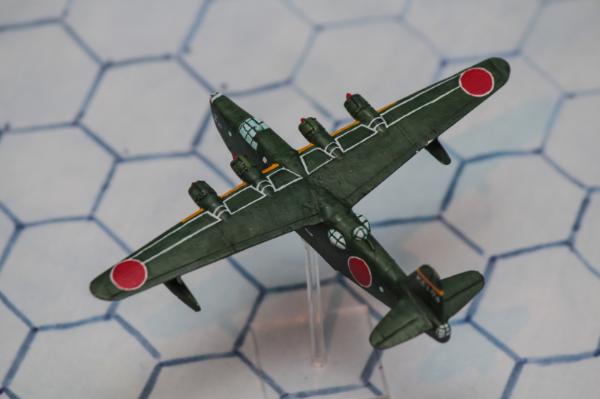
They were ultimately unsuccessful in their navigation, their bombs falling well off the mark and causing no casualties. They did however highlight the need for increased defences. A second attempt a week later resulted in one Emily being intercepted and shot down by Brewster Buffaloes near Midway Atoll.
Sticking with Imperial Japan but looking to the smaller end of the spectrum I've got the Nakajima A6M2-N (Navy Type 2 Interceptor/Fighter-Bomber) Allied codename "Rufe".
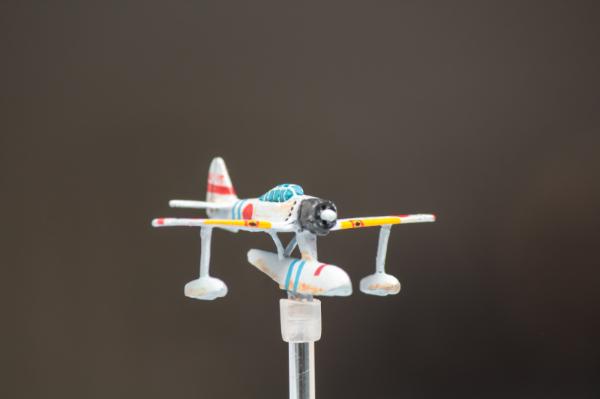
The concept was something of a rarity in that no other nation opted for a dedicated floatplane fighter/interceptor, but it's hardly surprising given the realities of prosecuting a war in the Pacific.
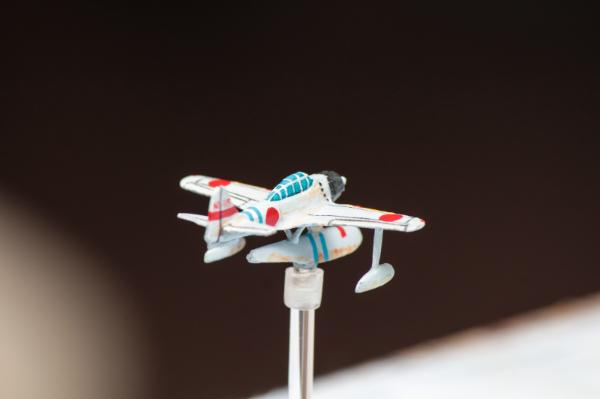
Based on the Mitsubishi A6M Zero the floatplane version had a large central float with outboard stabilisers under each wing. They were mainly used in a defensive interceptor role protecting remote island bases but also saw action with seaplane carriers in the Indian Ocean acting as fighter-bombers and short reconnaissance support for amphibious landings.
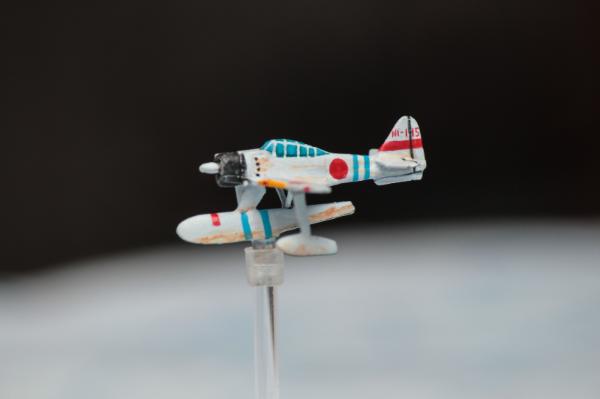
As allied fighter cover increased throughout the Pacific campaign the Rufe, encumbered with the extra drag of its floats just couldn't stand the pace and those that weren't destroyed outright fell back to the defence of the home islands.
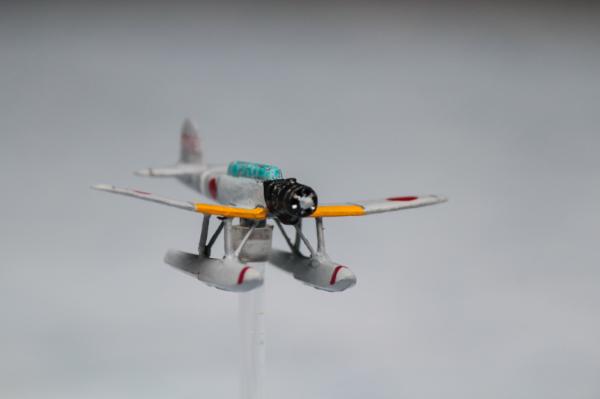
This is the Aichi E13A, code named "Jake" the most numerous of Japan's long-range reconnaissance seaplanes.
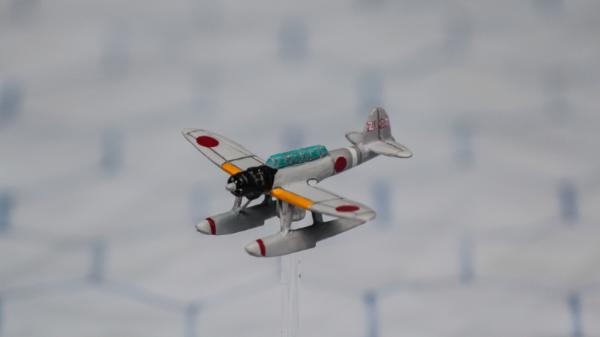
The Jake was the Imperial Japanese Navy's multi purpose workhorse used for all kinds of transport, sea rescue, scouting ahead of the fleet, general spotting and occasional combat duties.
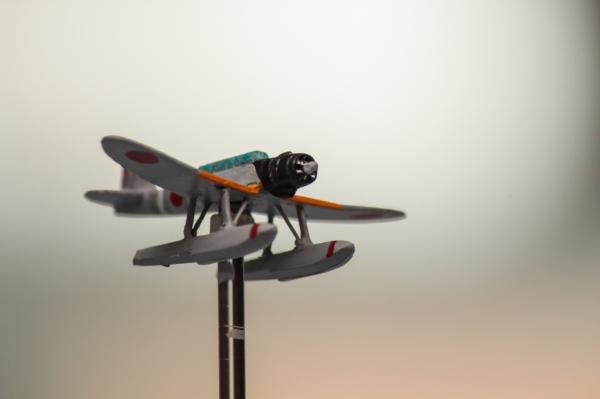
They operated off seaplane tenders and battleships as well as island bases. They weren't particularly well armed with only a single defensive machine gun however some carried air-to-surface radar and had a downward pointing 20mm cannon to attack American PT boats. They could also carry bombs or depth charges and so were quite capable of ruining your day of encountered at sea.
Another small Japanese floatplane next. This is the Yokosuka E14Y (allied codename "Glen").
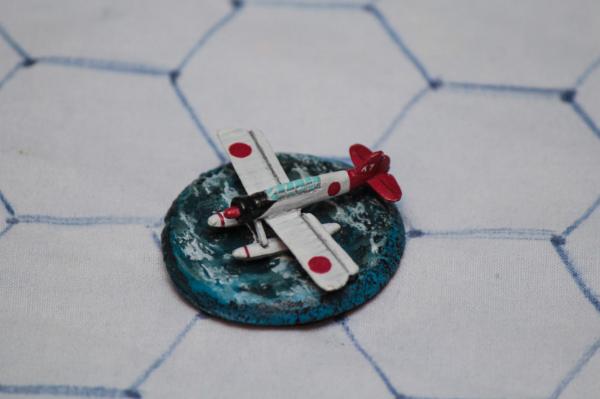
The Glen was designed to be carried aboard an I-15 series submarine. Once within range of they were assembled and catapult launched to be flown over enemy territory on photo reconnaissance. With the photos in the can the little float plane would come down beside the submarine, be winched aboard and stowed away or simply abandoned and sunk with the crew and valuable photos safely on board the submarine.
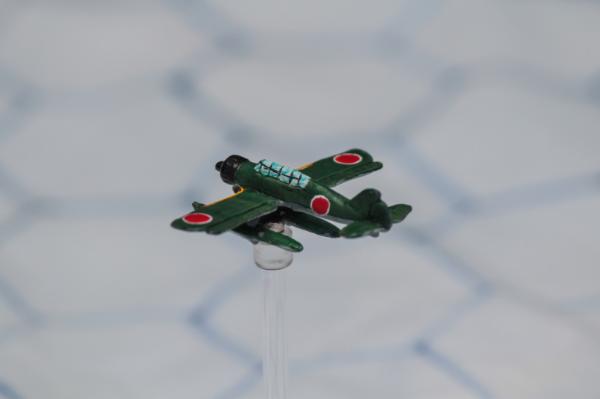
This "Glen" was flown by Nobuo Fujita who was the only enemy airman to bomb the US mainland. On September 9, 1942 Fujita dropped incendiary bombs over southern Oregon in an attempt to start forest fires. It wasn't a very effective attempt and the local fire brigade dealt with it quickly.
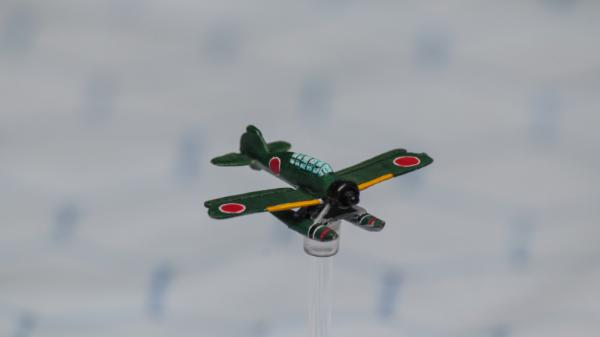
Later in life Fujita was invited to return to the little town of Brookings Oregon where he received a warm welcome. He planted a tree at the site where he had bombed and raised money for a library that now displays his family's 400 year old katana. He was made an honorary citizen of Brookings shortly before his death in 1998.
And the last of my Japanese floatplanes is the Aichi M6A Seiran attack floatplane.
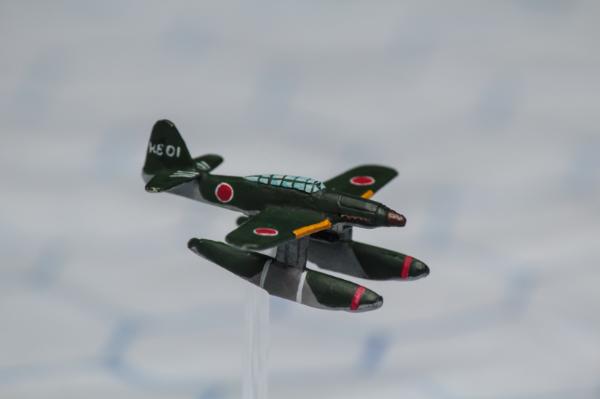
This was an upscaled and altogether more lethal submarine launched concept along the same lines as the Glen, but intended to operate from the much larger I-400 class submarines. Their original mission was to conduct aerial attacks against the United States.
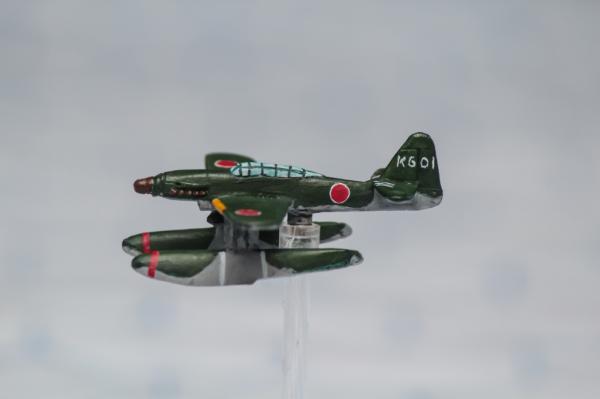
The story of the design and operation of the Seiran tracks the course of the war for the Japanese quite well. Initially designed with a fixed float undercarriage these attack planes would be able to land beside their submarine carriers once their mission was complete to be re-stowed aboard. However as defences mounted around their intended targets it was deemed prudent that the pilots should have the option to jettison the floats if they encountered enemy fighters, their unhampered performance helping their chances of reaching and bombing their target.
In fact, they soon concluded, why launch with floats at all if they would only be a hinderance? They would of course have to ditch in the sea on their return to the submarine but the pilots could be recovered. The aircraft would be sacrificed for the sake of the mission.
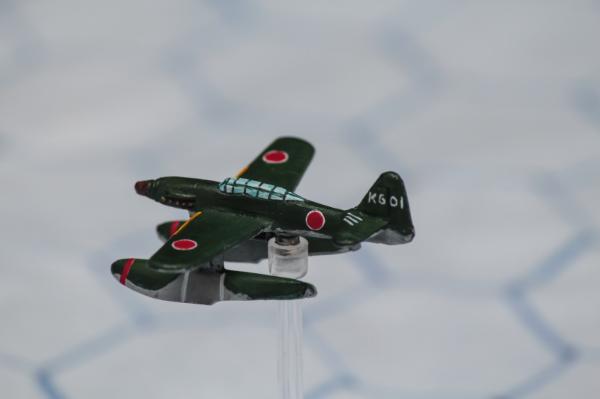
Soon however the situation became desperate and the pilots noted the modifications now taking place on their machines. Now, not only were the floats detached but the bombs were to be permanently fixed in place. Evidently the top brass estimated their best chance of achieving mission success was by sacrificing both man and machine. In the end however their training was for naught as the Japanese surrender came before the submarine launched aerial attack could go ahead. The Seirans were decommissioned, launched into the sea unassembled, before the three huge I-400 submarines were surrendered to the US Navy.
Next up its a classic of German seaplane design the tri-motor Blohm & Voss Bv 138 Seedrache.
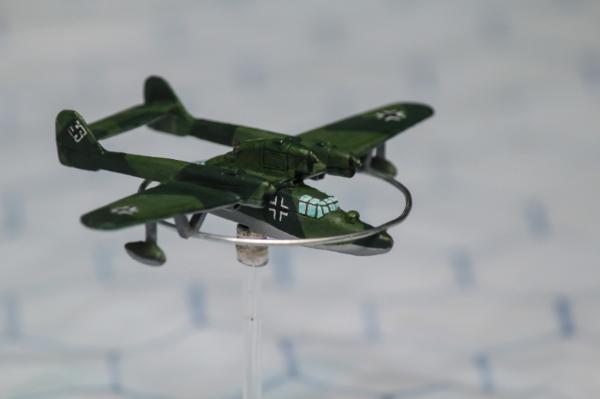
Not content with a cool name like SeaDragon the Germans always known for their comedy wit named it "die fliegende Holzschuh"
(The Flying Cog) because of the shape of the hull.
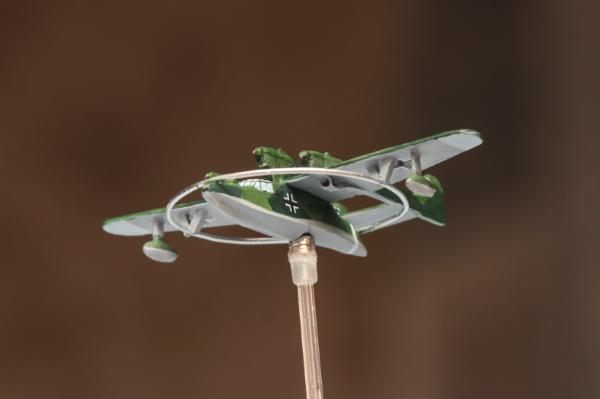
The Seedrache was Germany's primary maritime reconnaissance and patrol seaplane with 297 built. It was an unconventional design to say the least but as it turned out a very versatile one. It was big enough to carry up to ten passengers, very handy for sea rescue, but that weight capacity could also be used for bombs, depth charges or for anti-shipping patrols. Or for radar equipment to hunt in conjunction with submarine groups. Some were also fitted with degaussing rings for mine sweeping. (Like this one- that's what the big loop is.)
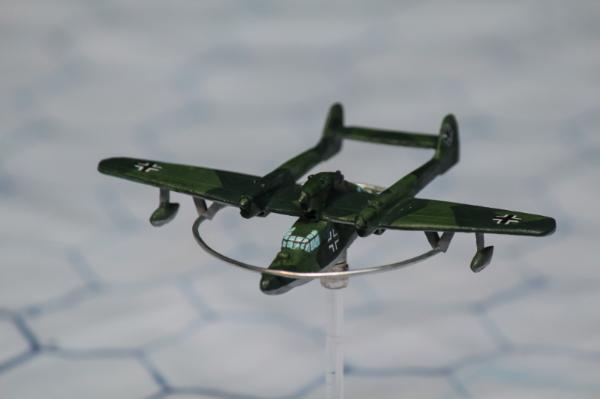
The man behind the design was evidently quite the unconventional thinker. But of course not everyone appreciated his particular taste in aeronautical design. A British journal by the name of Aeroplane printed this piece of poetic criticism beside a picture of a Bv 138.
Richard Vogt, that original man,
Turns out aeroplanes uglier than
Most any other designer can.
Here is shown on Baltic Sea
A typical Vogt monstrosity—
The One-Three-Eight by B. & V.
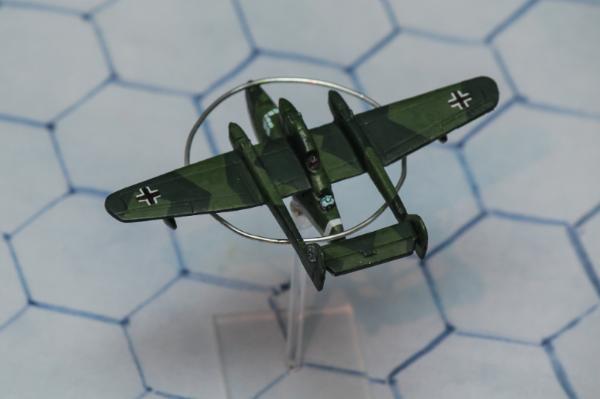
I'd have to say I heartily disagree, but haters gonna hate.
And a final entry bring up the rear it's a big French boat in Vichy striped pyjamas.

The Bréguet 521 Bizerte was a big Tri-motor flying boat developed for the French Navy and initially deployed with five squadrons for all manner of long range maritime reconnaissance and submarine hunting. They sported five defensive machine guns including one in a tail gunner's position and could carry a bomb load of up to 300kg.
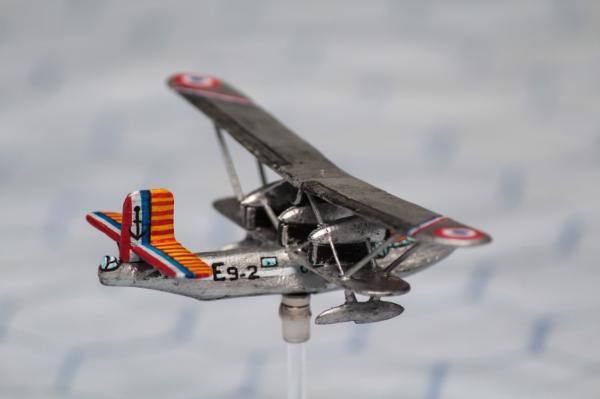
It continued in service under Vichy control with a dozen serving in the Mediterranean. They were useful and well designed machines and Luftwaffe also used some to supply Seenotdienst sea rescue units off the French Atlantic coast.
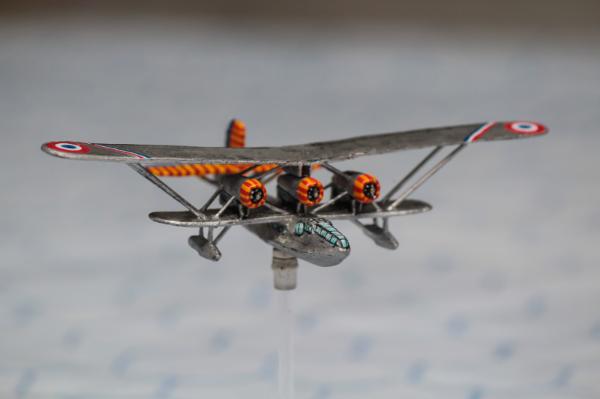
This miniature it has to be said was a bit of a nightmare to build. Its mostly made of wire and glue and in honesty the whole front end was a bit off and took some green stuff modification to bring it into shape. Not that I'm criticising the excellent sculpting and quality of the product, I'm honestly very impressed with the skill and workmanship and the huge range on offer. Some minis just take a bit more work than others and this was certainly one of those.
So that's it for the Axis floaty boaty planes. Here's a big shot of the whole lot all together.
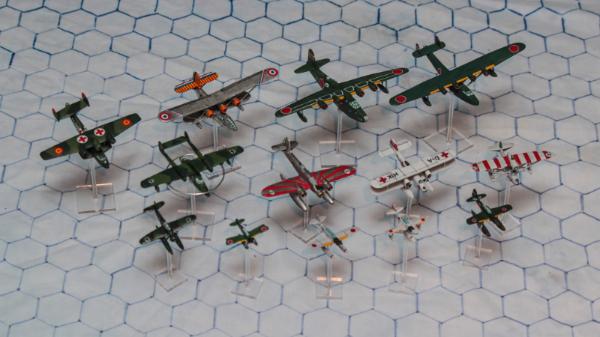
It's been lots of fun taking to the maritime skies with both sides. There have been some excellent planes available at this scale to allow me to explore the subject quite expansively.
I'm going to take a break from 1:300 planes for a while. Got lots more still to do but I'll wait for the enthusiasm to resurface after a bit of something else for a while. Do let me know what you think as always, and thanks for visiting the gallery.